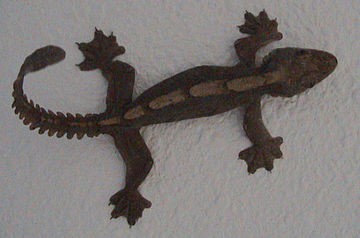Type the name of the breed you're looking for below
[wpdreams_ajaxsearchlite] Don't see the breed your're looking for? Click here and let us know!
Flying Gecko
| Place of Origin and Range | Ptychozoon is a genus of arboreal gecko from South east Asia, known as Flying Geckos or Parachute Geckos. |
| Description | They are characterized by cryptic colouration and elaborate webs surrounding the neck, limbs, trunk, and tail. These membranes help to conceal the gecko against trees. When the gecko leaps into the air, the flaps are used to generate lift and allow the gecko to control its fall. It can fly up to 200 feet (60 meters). Also it does a swoop at the end of its flight to land softly. |
| Morph Patterns Available | Yes |
| Adult Size | Can grow up to 7 in ( 17.5 cm) |
| Accommodation | Most geckos prefer warm habitat with lots of shade and hides. High humidity and lots of branches for climbing. Provide a small water dish and mist twice daily. Cover the sides of the cage when possible to prevent injury to your gecko from running into glass. |
| Lifespan | Can live up to 20 years |
| Feeding / Diet | Feeds on insects and fruit. |
| Other Considerations | Healthy geckos with appropriate living conditions shed regularly. They shed completely and often eat their shed to the point where the keeper may not even notice that the gecko has shed. Some geckos experience shedding problems occasionally and others chronically have difficulty shedding. Signs of shedding difficulty range from large sheets of shed clinging to the head, tail or limbs to residual shed left around the eyes, on the tail tip or the toes. This shed must be removed since it can cause constrictive damage to the extremities. All geckos require calcium to maintain strong bones and vitamin D3 to aid in metabolizing the calcium. Calcium is generally supplied in powdered form in a bowl, through dusted feeders or as an ingredient in fruit. |



